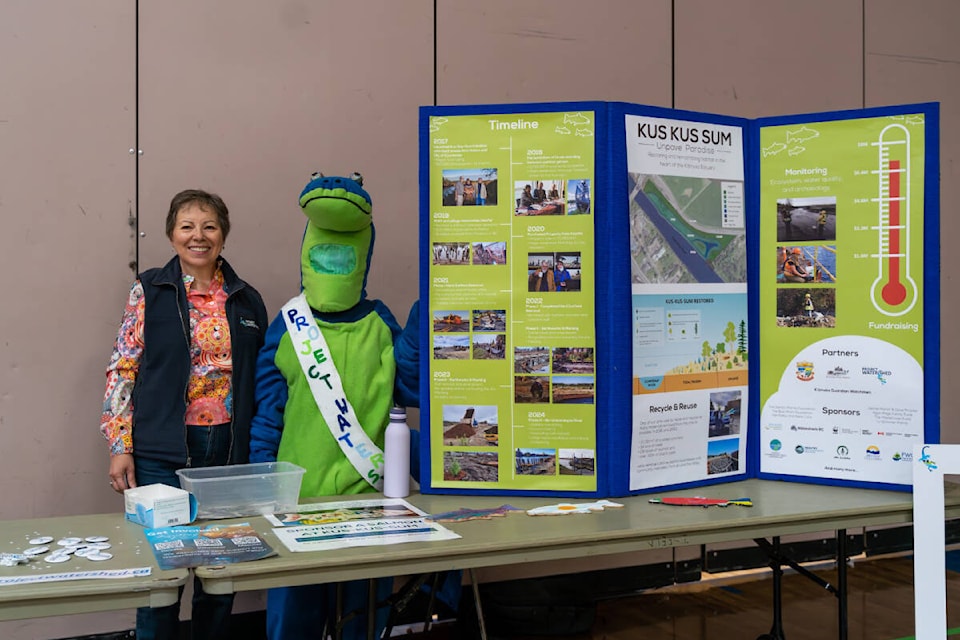Comox Valley Project Watershed Society was thrown into the spotlight with the commencement of the Kus-kus-sum Project; however, this environmental group has been stewarding the Comox Valley since 1993.
“Most people think Project Watershed is the Kus-kus-sum restoration project, however, we are so much more than that,” saidKathy Haigh, chair of Project Watershed.
How much more became apparent at the organization’s 30th annual general meeting, held on June 10. At the meeting, staff summarized a variety of marine and aquatic research, restoration and education projects that span from Oyster River to Annie Creek, illustrating that Project Watershed continues to be a force for environmental stewardship.
An influx of new members were elected to the board of directors, including Thomas Grimmer, Brodie Guy, Geoff Wickstrom, and James Godwin. These new directors bring a wealth of expertise in areas including society/charity work, Indigenous partnership and collaboration, landscape architecture, environmental consulting, and communications. Continuing oard members are Haigh, Alisha Drinkwater, Pat Sloan, Brian Storey and Bill Heath.
Tim Ennis and long-standing directors Don Castleden and Dan Bowen stepped down from the board this year. Castleden served as a director for 22 years and Bowen for 12 years. Ennis was a director from 2015 to 2018 and was integral to the initiation of the Kus-kus-sum Project during that period.
“It is with great admiration and deepest gratitude that we acknowledge their exceptional contribution” said Haigh.
Fiona Hamersley Chambers, the keynote speaker at the meeting, gave a fascinating presentation on native plants and explored the idea of estuary gardens.
“Wild plants are not a museum” she insisted, going on to speak about First Nation management practices that not only yielded the food they needed but also increased the productivity of the estuary plots they were managing.
The idea of always interacting with an ecosystem in a way that is beneficial to it underpins the term Keeping It Living (Q’waq’wala7owkw), which comes from Chief Adam Dick as written by Nancy Turner. Project Watershed has been using Keeping It Living as an umbrella for its stewardship work since 2008.
“We felt an immediate congruity with the term and strive not only to embody this in our work but also do our part to bring back this philosophy,” said Caila Holbrook, Project Watershed’s manager of education and outreach. “When we learned that Fiona was connected to this idea, we knew she was the right person to speak at our 30th AGM.”
“With another successful AGM under our belt, we are back to work,” said Caitlin Pierzchaski, Project Watershed’s executive director. “If folks want to partake in our efforts, they can attend an event or be part of our 30 for 30 campaign where we are encouraging people to either donate $30 or 30 hours to celebrate our 30th year of stewardship. We have gift certificates and keepsakes for those who do.”
Project Watershed’s Annual General Report and a recording of the annual general meeting can be found online at .



